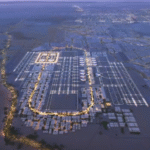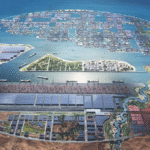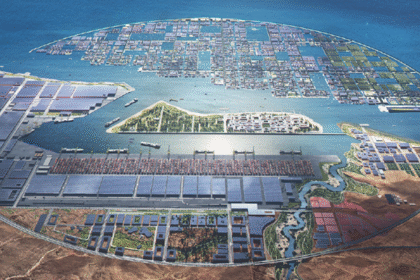The development of Riyadh’s main airport is a strategic project of Vision 2030, designed to transform the capital of Saudi Arabia into a global aviation hub. The new King Salman International Airport (KSIA) is being created to replace the existing King Khalid International Airport, which has already reached its capacity limit of about 30 million passengers per year.
KSIA will be located on an area of 57 km² north of the city. The project envisages 6 runways, a capacity of up to 120 million passengers per year by 2030, with the potential to grow to 185 million by 2050.
As of July 2025, urban development and technical design have been completed, the master plan has been approved, and the management structure through the Public Investment Fund (PIF) has been formed. Tenders have been held for the first phases of excavation work, and orders have been issued to mobilize contractors. The architectural concept is being developed by a consortium led by Foster + Partners (USA), with leading Saudi and international engineering companies participating in the work.
The estimated budget for the project is around $30 billion, including terminals, interchanges, utilities and green energy. KSIA will be part of the Riyadh Logistics Hub and will be directly integrated with the Riyadh Metro network, expressways and future rail routes. The airport has been designed with a focus on sustainability, using renewable energy, digital management and green construction solutions.
The first phase is scheduled to begin operations in 2028, with full implementation scheduled for the period up to 2030.
For the construction industry, the project is one of the most technologically intensive and capital-intensive hubs in the region. It requires a high level of coordination, manageable deadlines and the ability to work in close conjunction with other megastructures in the capital.
“KSIA is a symbol of new aviation thinking: scale, sustainability, digitalization. It will become a benchmark for future international hubs and a test of maturity for the entire design and contracting contingent involved in its implementation.” — Igor Bukato, international expert in construction and infrastructure









